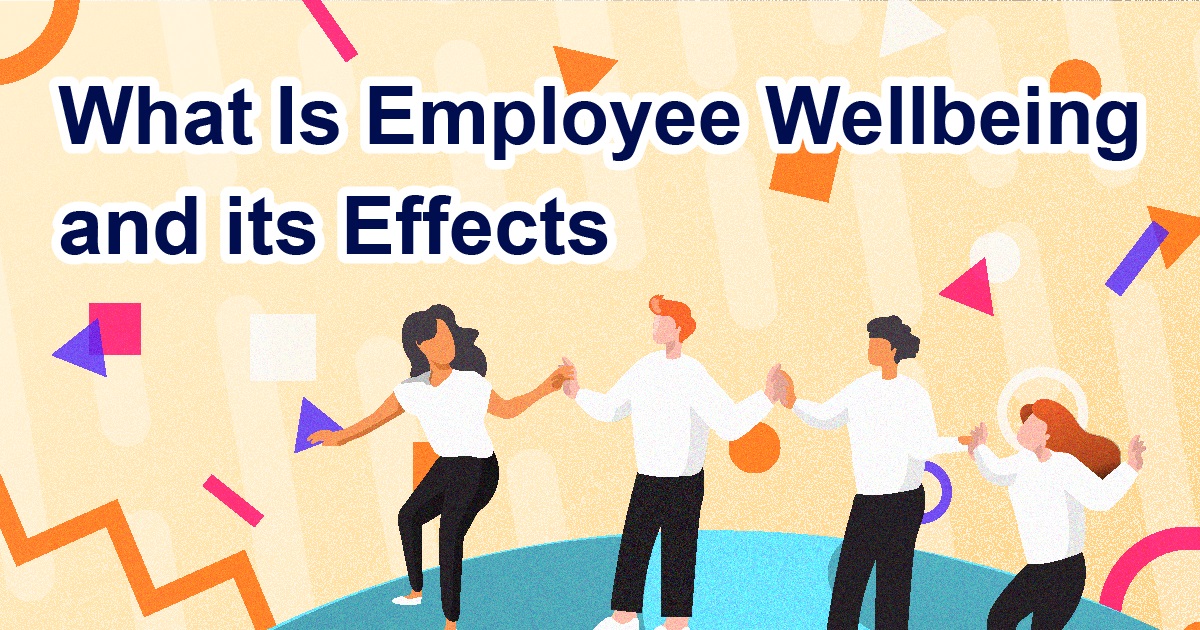What Is Wellbeing and its Effects

Corporate efforts are essential for employees to work in a healthy and happy environment. In recent years, due in part to the impact of the new coronavirus infection, the way employees work and the nature of companies are being reevaluated. Under such circumstances, the concept of "wellbeing" has been attracting attention.
In this issue, we will explain what the idea of wellbeing means and why it is attracting so much attention from companies, as well as touch on initiatives to promote wellbeing. We hope that those in charge of human resources and general administration departments will find this information useful.
What is wellbeing?

Initially, we will explain the meaning and definition of the term wellbeing and how it differs from similar terms. We will also touch on why wellbeing has become more important in society in recent years. Let's start by reviewing the basics.
Meaning and definition of wellbeing
Well-being translates directly to "happiness" or "health. by the Ministry of Health, Labour and Welfare.The term is defined as "the concept of being in good physical, mental, and social condition, with individual rights and self-fulfillment guaranteed."
It was also mentioned for the first time in the following charter, devised at the time of the establishment of the World Health Organization (WHO)
Health is a state of complete physical, mental and social well-being and not merely the absence of disease or infirmity."
(Health does not mean not being sick or weak, but being physically, mentally, and socially all in a state of contentment.)
What is the Charter of the World Health Organization (WHO)" (Japan Association of WHO)
Well-being is a concept that is being emphasized by WHO and other institutions around the world, and is attracting attention not only in the Japanese business scene but also globally.
Difference in meaning between wellbeing and health management
Health management" is defined by the Ministry of Economy, Trade and Industry as "the strategic implementation of employee health management from a managerial perspective.
Health management is often confused with wellbeing. The difference between the two is whether they are concepts or concrete methods. The difference is that wellbeing is a concept, while health management is a method to achieve it.
Management that pursues wellbeing is called "wellbeing management". There is a difference between wellbeing management and health management in the scope of health pursued. Well-being management pursues a wide range of health, including social health. In contrast, health management is considered to be management that pursues primarily physical and mental health.
Health Management" (Ministry of Economy, Trade and Industry)
Why wellbeing is becoming more important in society
Reinforcement of work style reforms
Social fulfillment, which is part of wellbeing, is essential to the realization of work style reform. The reason for this is that one of the goals of work style reform is to enable each and every worker to have a better outlook for the future. Companies that are reforming their work styles should also understand the concept of wellbeing.
Promoting the SDGs
The SDGs (Sustainable Development Goals) are international goals adopted at the UN Summit in 2015. One of the goals of the SDGs is "health and well-being for all. Not only in Japan, the SDGs, which are international goals, also call for the improvement of wellbeing, and are attracting attention worldwide.
Spreading Diversity
Diversity includes factors such as gender, nationality, personality, values, disability, and work style. In recent years, opportunities for people with diverse values and backgrounds to work together have been increasing. Reasons cited for this include the overseas expansion of Japanese companies and the increase in the number of foreign workers in Japan. Management policies and initiatives that respect diversity are becoming increasingly important.
Back to ContentsBenefits and Effects of Corporate Well-Being Initiatives

The following benefits and effects can be expected when companies engage in wellbeing initiatives. We hope you will consider taking a proactive approach.
Easier to improve employee fulfillment.
When wellbeing improves, employees are more likely to find meaning in their lives. Increased happiness and a sense of fulfillment in their work will have a motivational effect.
Increased employee initiative, productivity, and performance can have a positive impact on company performance.
Expected to have a positive effect on retention of human resources
When wellbeing stabilizes employees' minds and bodies, it is easier to prevent factors that can lead to turnover. The spread of wellness in the workplace can have a lasting effect on the smoothness of human relations in the workplace. Companies can benefit from reducing the costs associated with employee turnover, such as recruiting and training new employees.
Back to ContentsExamples of initiatives to promote wellbeing

What measures should you take to promote wellbeing in your company? Finally, here are some specific measures on how to tackle wellbeing and how to achieve it.
Facilitate employee communication
When employees communicate better with each other, wellbeing is more likely to improve. The reason for this is that relationships and work problems are more likely to be resolved.
Specific measures to promote communication include the "Thanks Card System. The "Thanks Card System" is a system in which employees express their appreciation to each other by writing on paper or digital cards. Individual letters may be given to each other, or a representative may put them together and post them on a bulletin board.
Acquire the necessary knowledge through training
An effective way to promote wellbeing within the company is to conduct training that includes comprehensive knowledge input and practical exercises. It provides an opportunity for employees to learn more about wellbeing.
As for training content, "harassment training" and "diversity training" are expected to be effective. The advantage of training on a specific topic is that it is easy to delve deeper into the learning content. To avoid the cost of preparing content in-house, please consider using an external service.
Improve working conditions and work environment
In our commitment to wellbeing, it is also important to create a comfortable work environment for employees. Reviewing and improving existing systems and introducing new systems may help to create a flexible work environment.
For example, enhancing benefit packages can be expected to improve satisfaction levels. Initiatives such as meal subsidies, the establishment of daycare/nursery facilities, and telework subsidies are also effective.
Back to ContentsAiming to be a company where employees can work happily with wellbeing
We have described "wellbeing," a topic that is attracting attention worldwide. By considering the well-being and health of employees and working to promote wellbeing, companies can benefit from a variety of advantages and effects. If many employees do not know much about wellbeing, it is a good idea to support them in acquiring the necessary knowledge through training.
If you want to get the word out about wellbeing, you can use the e-learning system "Wellbeing.learningBOX LearningBOX is an e-learning system that provides essential functions for in-house training, such as content creation and distribution, and course participant management. Courses can be designed in accordance with training content, and tests can be easily conducted to check employee proficiency. The system's simple operability and reasonable price have been well received, and many companies have adopted it for their in-house training programs.
You can sign up from Free Plan to try learningBOX Free Plan. Up to 10 accounts are available without expiry date.
▼You may also like:
Back to Contents


-
Discover rich featuresService Guide
-
Feel free to contact usGet in Touch
-
Try our Free PlanTry Free Plan











